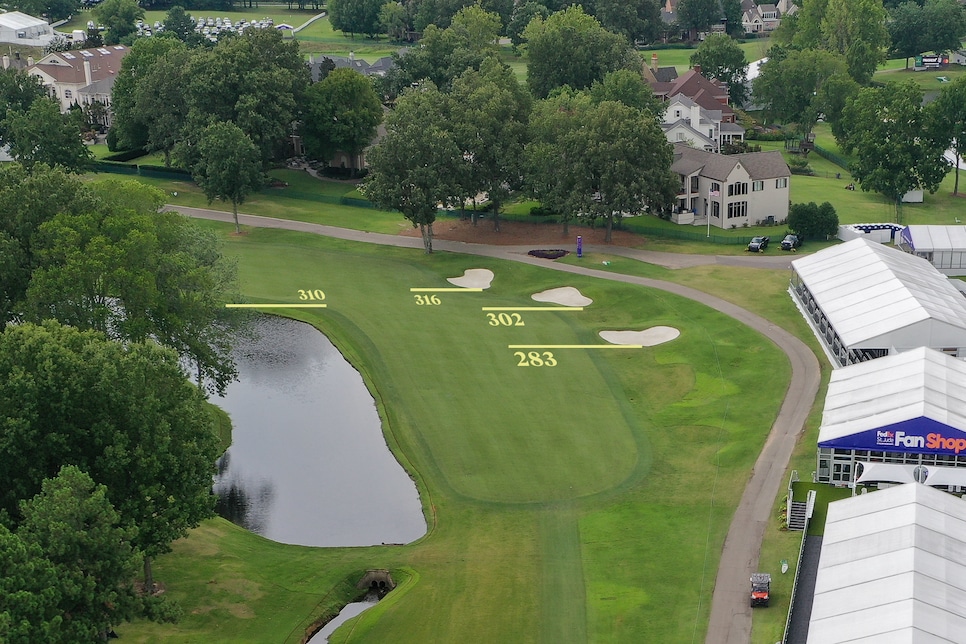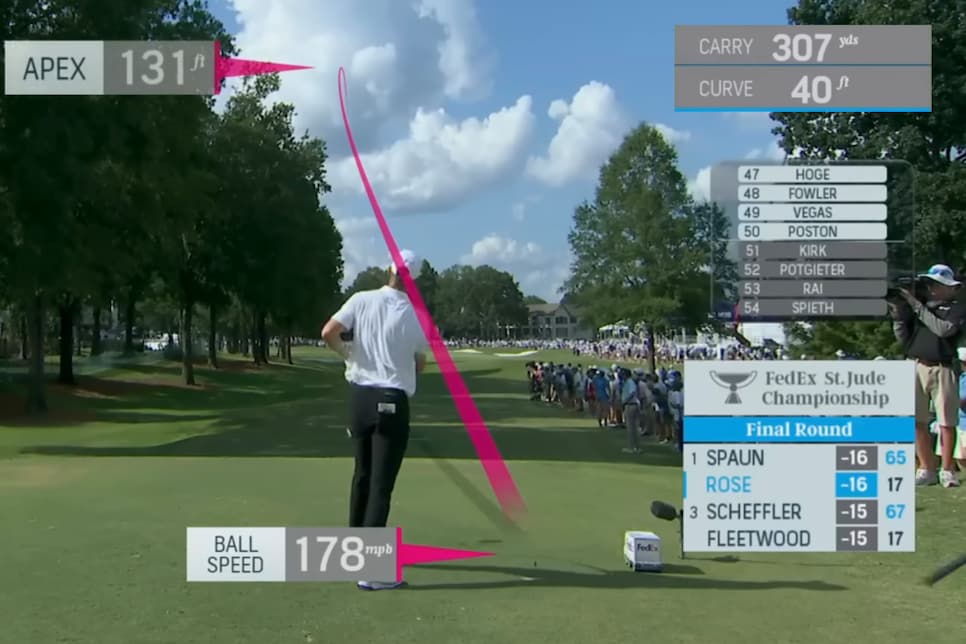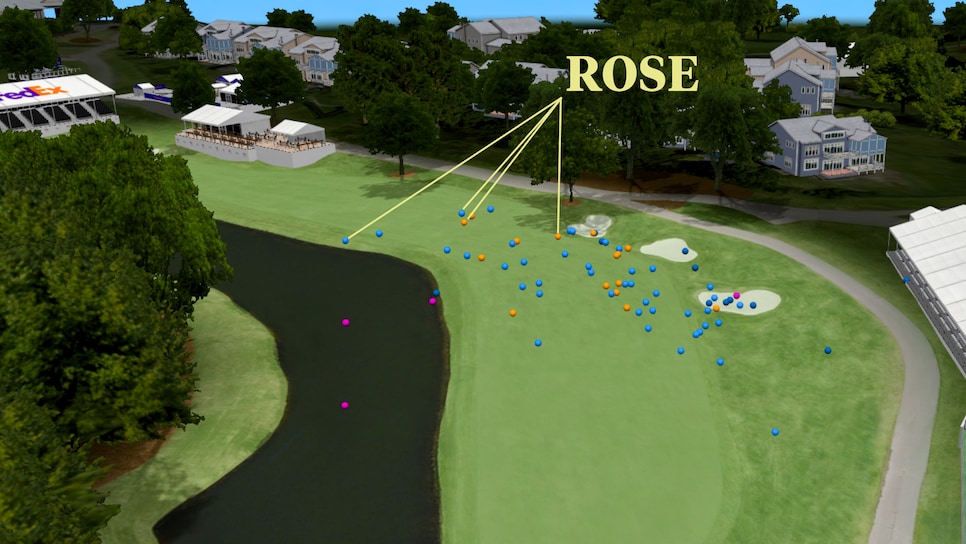Justin Rose has reinvented himself in recent years, trying to squeeze every ounce of talent from his now 45-year-old body. On Sunday at the FedEx St. Jude Championship, he reinvented himself once more, only this time not necessarily physically but mentally—with his course strategy. And it paid off big, Rose able to claim another PGA Tour title and lock up a place on his seventh European Ryder Cup team.
But what was the strategy? And how did it change? Let’s dive in.
The Situation
When Rose bogeyed the 12th hole during the final round at TPC Southwind in Memphis, he fell to one over par for the day and three shots back of his playing partner and fellow Englishman, Tommy Fleetwood. According to Data Golf, Rose’s win probability fell to 3.2 percent (he started the day at 16.2 percent).
With World No. 1 Scottie Scheffler and U.S. Open champion J.J. Spaun also ahead of him on the leaderboard, it appeared Rose’s bid for a 12th PGA Tour victory was over for this week.
But not so fast.
Rose rattled off birdies on 14, 15, 16 and 17 and arrived on the 18th tee tied for the lead with Spaun. He stood on the tee at Southwind’s infamous closing hole, and it was at that moment, he and his caddie decided to change the game plan.
The par-4 18th hole measures 448 yards, doglegging sharp to the left. Water runs down the entire length of the left-hand side of the hole and bunkers guard any overly conservative shot to the right. The play for many, including Rose all week, was to hit less than driver and thread it down the fairway, between the sand and the water.

John Sommers II
However, with the tournament on the line, Rose decided to pull driver. He had never tried it before, but felt sure it was the right play.
Here was his explanation.
His reasoning does actually hold up. Look closely at the 18th hole and you’ll see the distance to carry the water, tight to the left hand side, is 310 yards. The run out directly down the middle of the fairway is 316 yards. In theory, the fairway Rose was aiming for with driver was larger than the area many, including Spaun, were aiming for with 3-wood.

Ben Jared
“He’s so solid off the tee,” said Rose of Spaun after his round. “But he obviously had to fit a 3-wood into probably the tighter bit of fairway, so probably a harder tee shot for J.J., especially being a left-to-right player.”
Thus, in the final hole of regulation, Rose pulled driver. He reached 180 mph ball speed, nine miles an hour faster than his average on tour this season, carried it past the corner of the water and finished 326 yards in the far side of the fairway.

From this spot, another advantage to his strategy became clear. With the pin placed in the traditional back-left position on Sunday, Rose now was in a better spot to approach it from, compared to those players who hit less than driver.
“Obviously that angle that I was able to create to the back left pin was very advantageous.” Rose told the media after the tournament.
From that position in regulation, it appeared Rose’s strategy was going to pay off, capping a five-birdie run to finish and clinching the title. From his tee shot, he used the angle and hit a 121-yard approach to 13 feet. With his putter hotter than a dense, late-summer Sunday in Memphis, all waited for a signature Rose fist-pump and victory. However, he missed.
The Playoff
But luckily for Rose, that meant going back to the 18th tee and playing the hole, on which he now felt he had found an advantage. He and Spaun would play it over and over until there was a winner.
Would he stick with his new strategy? Of course.
On the first playoff hole, Rose pulled his tee shot left. With the new drone-tracer technology showing his ball was destined to miss the fairway, it seemed the result would be wet.

However, Rose’s aggressive strategy was built on the idea that he could carry the water, should he pull it left off the tee. And thus, his ball carried the water by just a few feet and came to rest just on the edge of the red line that bordered the hazard.
With just 92 yards to the hole, he gained the advantage, hit his ball inside Spaun’s approach but narrowly missed another chance to win.
So back to the tee.
On the second go-around, Rose again pulled driver. This time he hit the perfect shot, 317 yards into the middle of the fairway. While Spaun also hit the fairway, with 3-wood, Rose was 40 yards closer to the hole and had the advantage again. He would hit it to seven feet and make birdie, but it was only enough to tie a 30-foot birdie putt from Spaun.
Back to the tee. Again.
The Payoff
Now with a new pin position, on the right hand side of the green, possibly limiting Rose’s advantage, he once again stuck with his new strategy. Driver once more, this time cut up into the right side but holding the fairway as Rose has calculated. He had 140 yards to the new position and once again converted for birdie. This time, it was to win.
In the end, Rose birded six of the last eight holes he played on Sunday, twice making 3 on the 18th hole. Here is the ball plot of every tee shot hit on the 18th hole in the final round. You can clearly see Rose’s aggressive play compared to the rest of the field.

His four-birdie stretch on the back-nine got him into position to win but his spur-of-the-moment strategy change on the 18th hole won him the title.
Who said you can’t teach an old dog new tricks?
This article was originally published on golfdigest.com




